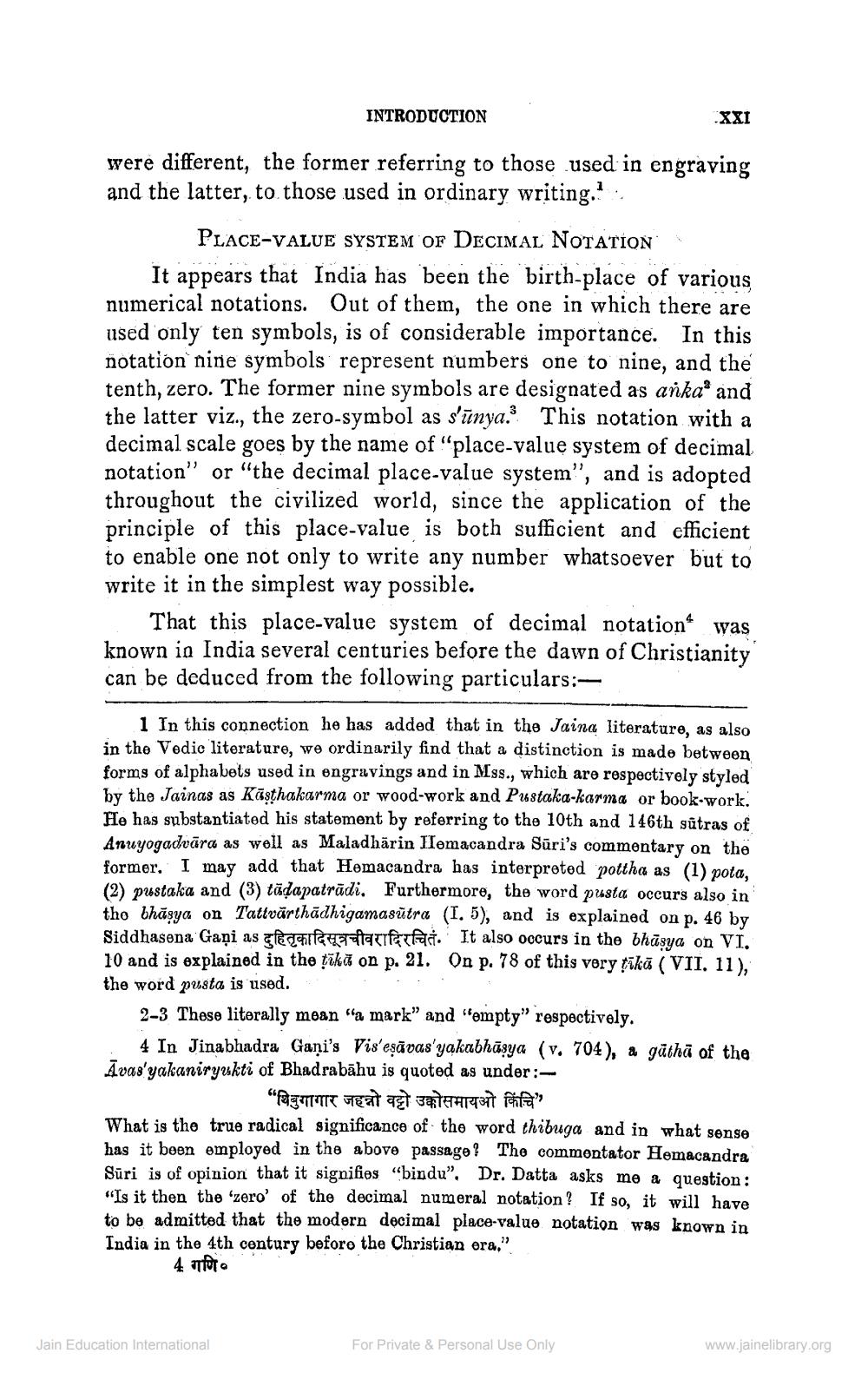________________
INTRODUCTION
XXI
were different, the former referring to those used in engraving and the latter, to those used in ordinary writing...
PLACE-VALUE SYSTEM OF DECIMAL NOTATION It appears that India has been the birth-place of various numerical notations. Out of them, the one in which there are used only ten symbols, is of considerable importance. In this notation nine symbols represent numbers one to nine, and the tenth, zero. The former nine symbols are designated as anka” and the latter viz., the zero-symbol as s'ünya.? This notation with a decimal scale goes by the name of "place-value system of decimal notation" or "the decimal place-value system", and is adopted throughout the civilized world, since the application of the principle of this place-value is both sufficient and efficient to enable one not only to write any number whatsoever but to write it in the simplest way possible.
That this place-value system of decimal notation was known in India several centuries before the dawn of Christianity can be deduced from the following particulars:
1 In this connection he has added that in the Jaina literature, as also in the Vedic literature, we ordinarily find that a distinction is made between forms of alphabets used in engravings and in Mss., which are respectively styled by the Jainas as Kāsthakarma or wood-work and Pustaka-karma or book-work. He has substantiated his statement by referring to the 10th and 146th gâtras of Anuyogadvāra as well as Maladhārin Hemacandra Sūri's commentary on the former, I may add that Hemacandra has interpreted pottha as (1) pota, (2) pustaka and (3) tädapatrādi. Furthermore, the word pusta occurs also in tho bhāsya on Tattvårthādhigamasutra (1.5), and is explained on p. 46 by Siddhasena Gaņi as legaleseftateTAL. It also occurs in the bhāsya on VI. 10 and is explained in the tikä on p. 21. On p. 78 of this very tīkā (VII. 11), the word pusta is used.
2-3 These literally mean "a mark" and "empty' respectively.
4 In Jinabhadra Gani's Vis'eşāvas'yakabhāsya (v. 704), a gåtha of the Āvas'yakaniryukti of Bhadrabāhu is quoted as under:
___ "थिबुगागार जहन्नो वट्टो उक्कोसमायओ किंचि" What is the true radical significance of the word thibuga and in what sense has it been employed in the above passage? The commontator Homacandra Sūri is of opinion that it signifies "bindu". Dr. Datta asks me a question: "Is it then the 'zero' of the decimal numeral notation? If so, it will have to be admitted that the modern decimal place-value notation was known in India in the 4th century before the Christian era."
4 foto
Jain Education International
For Private & Personal Use Only
www.jainelibrary.org




